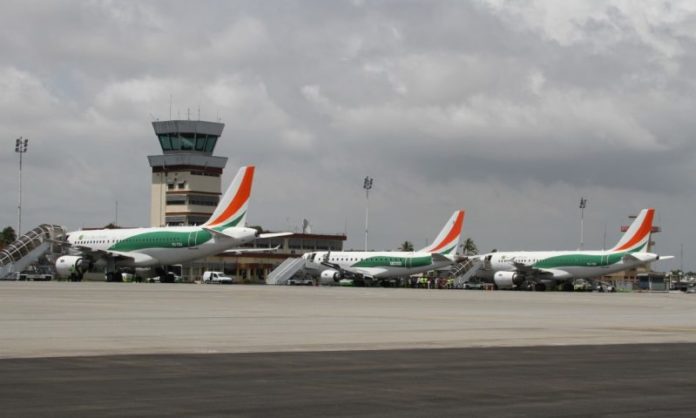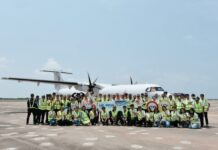

Airfreight in Africa is on the verge of massive expansion, driven by a landmark co-operation and regulations liberalisation agreement, a diversification of routes and improvements to infrastructure, writes Stuart Flitton.
These developments follow the strong and steady growth that led to the largest year-on-year increase in demand last year of nearly 18 per cent.
The signs are that this increase is likely to be maintained, or improved, over the next five to ten years.
Behind, and supporting, increased airfreight in Africa are a wide range of positive developments, including healthy GDP growth in many countries, expanding middle classes, a reduction in armed conflict and an increase in democratic, peaceful transitions of power.
Of course, these green shoots should be seen against a backdrop of enormous challenges and difficulties.
There are several factors that make the aviation experience in Africa different to that in other parts of the world. Perhaps the first thing to note is that, to misquote the Douglas Adams in The Hitch-Hikers’ Guide to the Galaxy, Africa is big, really big.
Not only is the landmass enormous, with 15 countries landlocked, but Africa has a huge population of roughly one and a half billion people, or 12 per cent of the world’s people. Africa is not homogeneous but is made up of 54 countries, each with a history, culture and prospects of its own.


Hassan El-Houry (pictured), co-author of Fly Africa: How Aviation Can Generate Prosperity Across the Continent with Eric Kacou, notes that with such a large area and number of people, the aviation industry has developed to produce a total of more than 720 airports and around 420 airlines.
However, the development has been slow and stuttering and the continent accounts for a tiny fraction of the world’s passengers and an even smaller proportion of airfreight.
Among the main obstacles have been a lack of liberalisation in air traffic rights leading to limited connectivity. This is a particular problem for bellyhold cargo, especially perishables.
The lack of direct routes also leads to high costs, especially in taxes and fuel.
Another major obstacle to growth is poor infrastructure. Some airports have freight aircraft offloading cargo but then leaving empty because there is not an x-ray machine or weighing scales and airlines are unable to carry cargo that hasn’t been screened properly. An x-ray machine can cost in the region of $100,000, scales even less, so relatively small investments can transform local trade and industry.
Infrastructure issues being addressed
Some infrastructure problems are much bigger, such as poor quality and insufficient warehouse space, old and sometimes dangerous runways, which many governments simply can’t afford to improve.
However, refurbishments are taking place. An $80 million upgrade at Roberts International Airport in Harbel, Liberia has led to the opening of a new passenger terminal last month and the renovation of the decrepit 1970s runway into one that will support heavy loads and help to improve air safety.
The 57,000 sq m aprons have been expanded to 85,000 sq m.
Much of the work was financed by the China Export-Import Bank, the Saudi Fund for Development and the Arab Bank for Economic Development for Africa.
Construction was carried out by China Harbor Engineering Company and Sino Hydro and completed in just 15 months.
El-Houry says that such partnerships are key to the modernisation of facilities and believes that these then need to be run not by government departments but by professional airport management companies.
Felix Houphouet Boigny Airport in Abidjan, Côte d’Ivoire, is a prime example. “Management was handed over to a private company (Aeria),” he says. “The airport is doing very well. It’s top-of-the-line, perfect service, clean, secure. As good as any in the world.”
Government light touch
A light touch from governments over airlines is another area that has led to success.
El-Houry points to Ethiopian Airlines that is “shielded from the political ramblings of the government and the political in-fighting. They have been able to do very well. They have a clear strategy and it has a professional management team and a professional board of directors,” he says.
However other national carriers are more strictly controlled and are sometimes an extension of the government and its political dynamics. These include South African Airways and Kenyan Airlines.
While both these airlines are doing well, they are a huge burden on the national budget and susceptible to dramatic political changes.
El-Houry believes that the role of governments should be restricted to setting up the regulatory arrangements with the management of the airlines being handed over to the private sector.













